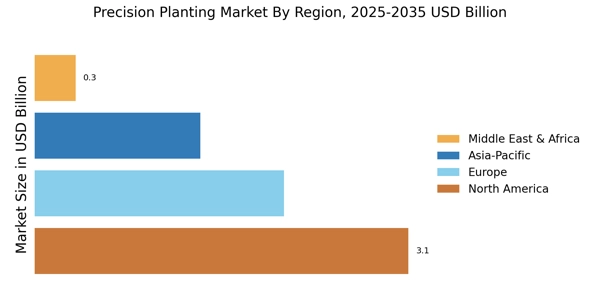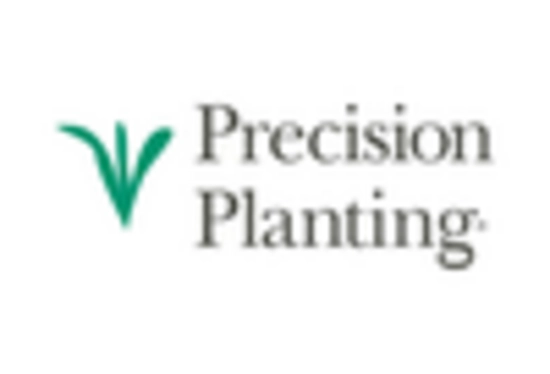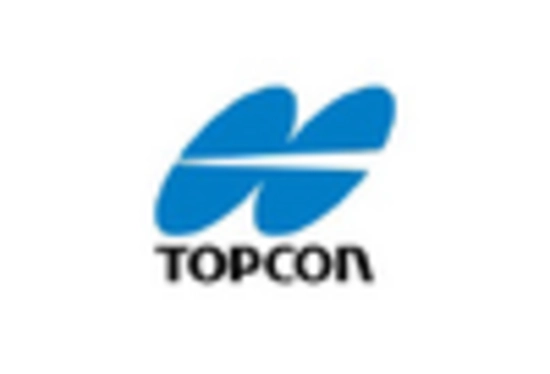Rising Demand for Food Security
The increasing The Precision Planting Industry. As the need for efficient food production intensifies, precision planting techniques offer a viable solution to enhance crop yields and ensure food availability. Data indicates that by 2050, food production must increase by approximately 70% to meet global demands. Precision planting technologies enable farmers to maximize output while utilizing fewer resources, making them essential in addressing food security challenges. This rising demand is expected to significantly influence the growth trajectory of the Precision Planting Market.
Government Support and Incentives
Government initiatives and incentives play a crucial role in shaping the Precision Planting Market. Many governments are implementing policies that encourage the adoption of precision agriculture technologies through subsidies and grants. These financial incentives are designed to support farmers in transitioning to more efficient planting methods, thereby enhancing productivity and sustainability. For instance, programs aimed at promoting precision farming have been shown to increase adoption rates by over 25% in certain regions. As governmental support continues to grow, it is likely to further stimulate the Precision Planting Market.
Adoption of Smart Farming Practices
The rise of smart farming practices is significantly influencing the Precision Planting Market. Farmers are increasingly utilizing data analytics, IoT devices, and machine learning to make informed decisions about planting strategies. This data-driven approach allows for real-time monitoring of soil conditions and crop health, leading to more effective planting techniques. Reports suggest that the integration of smart farming technologies can enhance planting accuracy and reduce operational costs by approximately 15%. As the agricultural sector continues to embrace digital transformation, the Precision Planting Market is poised for substantial growth.
Sustainability Focus in Agriculture
Sustainability has emerged as a pivotal driver within the Precision Planting Market. As environmental concerns grow, farmers are increasingly adopting practices that reduce chemical inputs and enhance soil health. Precision planting techniques contribute to sustainable agriculture by optimizing resource use, thereby minimizing waste and environmental impact. Data indicates that precision agriculture can reduce fertilizer use by up to 30%, which not only lowers costs for farmers but also mitigates the ecological footprint of farming activities. This focus on sustainability is expected to propel the Precision Planting Market forward as stakeholders prioritize eco-friendly practices.
Technological Advancements in Precision Planting
The Precision Planting Market is experiencing a surge in technological advancements that enhance planting efficiency and crop yield. Innovations such as GPS-guided planting systems and automated machinery are becoming increasingly prevalent. These technologies allow for precise seed placement and optimal spacing, which can lead to improved crop performance. According to recent data, the adoption of precision planting technologies has been linked to yield increases of up to 20% in certain crops. As farmers seek to maximize productivity while minimizing resource use, the integration of advanced technologies is likely to drive growth in the Precision Planting Market.

















Leave a Comment